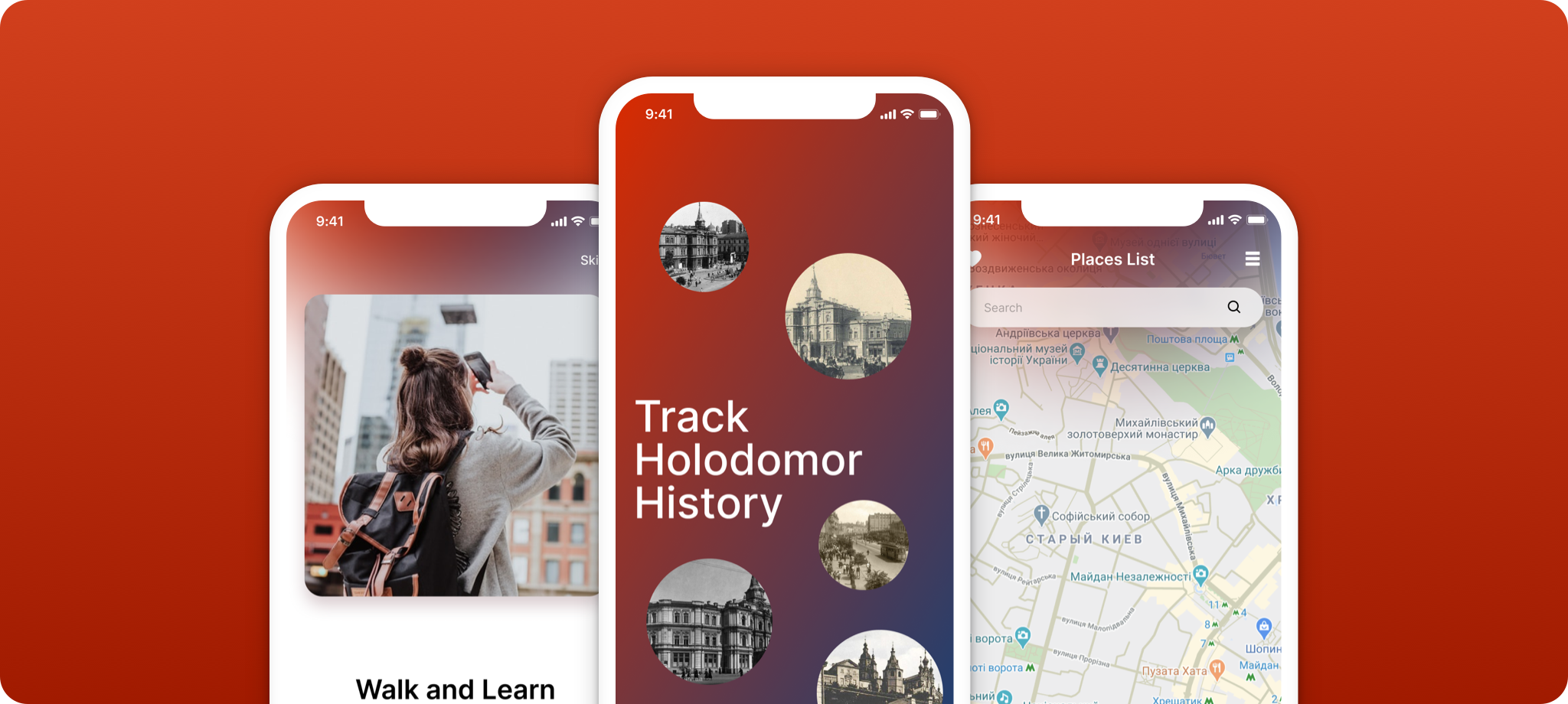Track Holodomor History
History at your fingertips

The Track Holodomor History app will guide you through the capital of Ukraine of the 1930s and reveal the unknown history of that time.
The application was developed for the Holodomor Museum – and that’s a great example of how mobile technologies can enrich visitor impressions or even completely change them.
This application goes even further as it creates interactive spots and routes around the city, providing a unique out-of-the-museum experience.
Stats

13 • Weeks

6 • People

320 • Commits
Challenge
Usually, mobile applications are used to improve the in-museum experience using QR-code scanners, AR technologies, etc. Yet, the team of the Holodomor Museum in Kyiv decided to rethink the concept of museum mobile apps and create digital expositions all over Kyiv.
From a technical perspective, the app heavily relies on geolocation features. For example, the implementation of pre-built routes required Google Maps integration. Also, it was necessary to introduce the hidden content, that would appear only within 400 meters from the location.
Strict deadlines were another challenge. As all the promotional activities have been planned on a specific date, the app couldn’t be released even a day longer.

Process
Since the Track Holodomor History application development was requested by the museum, they had no In-House Team to support the process.
Thus, we assembled a Full-Stack Team on our side to meet the tight deadline – a Project Manager, a UI/UX Designer, an App Developer, a BackEnd Developer, a QA Engineer, and a CTO who supervised the process.
Eventually, we managed to deliver the Product before the deadline:
Pre-Project
- 4 Weeks
Agile Development
- 13 Weeks
Release
- 2 Weeks
Solution
Finally, our Team delivered a cross-platform mobile application with a clean design. It was important to keep it minimalistic so it contributes to the aim of the app and not distracts.

To ensure the native feel and look while keeping up with tight deadlines, we used the React Native framework. Moreover, it allowed us to achieve outstanding performance when it came to Google Maps integration. Thus, the in-app map smoothly works on both iOS and Android devices.
Since the museum team had no technical expertise on their side, we set up all the processes for them. This included all the stages from UX Design to Agile Development and Release.
Finally, we hand over the finished product to the museum team. Now they can easily add or edit content with no participation from our side.



Our clients trust us